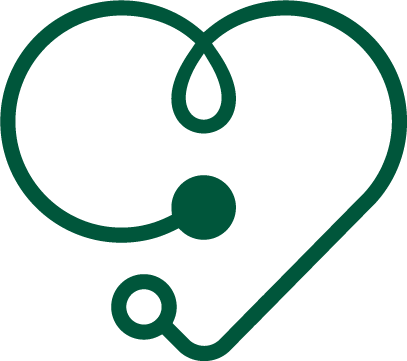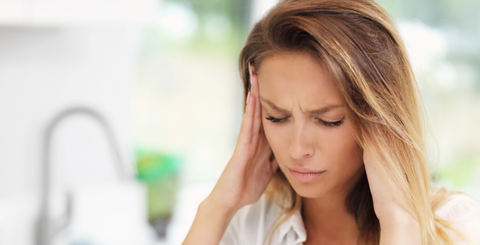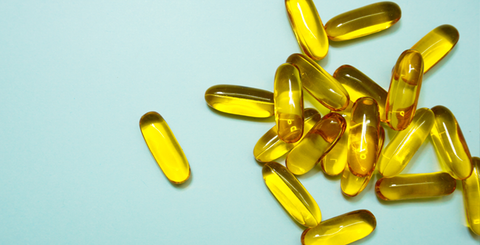Headaches can be so debilitating, especially the ones that drag on for more than a few hours. There can be lots of reasons for headaches, and symptoms will vary according to which type you have.
There are 4 main categories of headache, namely:
- Migraine
- Chronic
- Cluster
- Tension
Whilst these are the 4 main categories, within those categories there are so many reasons as to what has caused your pain, way too many to list in all honesty.
The World Health Organisation (WHO) say that virtually the whole population of the world will suffer once or twice a year from headaches. They work on the basis that headaches come in two varieties – primary and secondary – primary being those that have affected the nerves, cells or other physiological disorder, but should not be serious. Secondary headaches are those that will need further investigation by doctors and/or specialists. An underlying condition is what will affect the pain-sensitive nerves in your head, thereby causing headaches of varying levels of continuous or frequent pain.
Secondary headaches need not be serious, so even if you are referred to a specialist, it is not necessary to get yourself into a panic.
What can trigger a primary headache?
So many reasons, but in the case of primary headaches, it is quite usually one of the following:
- Food – specific foods and food additives can play havoc with your head
- High blood pressure
- Low blood pressure due to missing too many meals
- Stressful situations
- Lack of good sleep
- Bad posture, usually affects the spine and the neck, resulting in headaches, normally commencing at the base of the head
- Excess alcohol
- Dehydration
- Over-exertion
- Over-use of medication
- Some forms of trauma
Even something as simple as coughing can be included in this list.
Diagnosing cause and effect of secondary headaches
If your headaches are persistent or extremely painful, you will probably wish to see a specialist, and in fact your doctor will probably refer you. Ascertaining whether someone is suffering from secondary headaches can be difficult. Diagnosing headaches can be a complex procedure, when a specialist is not entirely sure where the headache is coming from, so therefore it will be necessary to have a series of tests.
In diagnosing, a method called ‘SNOOP’ is more than often used, and this can put your mind at rest when your specialist is able to confirm that your condition is primary, not secondary. The series of tests are known as ‘mnemonic snoop’, which stands for and evaluates the following:
- S systemic
- N neurological
- O onset
- O older age of onset (over 50’s)
- P previous headache history
Please remember that even if your doctor recommends snoop testing, it doesn’t mean there is anything seriously wrong. A doctor will merely want to get to the bottom of your pain, ease your mind and recommend the way forward.
Once you have been diagnosed, the results will depend on how you treat yourself in the future. Your medical professional will make suggestions and/or prescribe medications accordingly. Quite often, a change in lifestyle and diet will be part of the recommendation.
‘Helping your head’ with lifestyle and dietary changes
There is no ‘one size fits all’ solution to decreasing the number of headaches you have, or their severity. However, there are some basic principles to follow to generally ease headaches, until you discern exactly what causes them. With so many different types of headache and causes, it could take a while before the problem is really minimalised.
Considering that lifestyle and diet could be a big contributory factor to headaches, you may be wise to take advantage of our Complete Sensitivity Test. This test identifies sensitivities for particular foods or environmental conditions that may have caused your pain.
In terms of any necessary dietary changes, there are certain trigger food to potentially avoid, and others that are beneficial to you. If you also include certain lifestyle changes, this will all go a long way to ‘helping your head’.
Potential trigger foods
These are foods that have been reported and documented by sufferers as having the ability to cause headaches.
- Alcohol
- Cheese
- Chocolate
- Citrus fruits
- Cheese (mainly matured cheese)
- Dairy (other, such as yoghurt, milk, cream)
- Nuts
- Tomatoes
- Wheat-based products (bread, cakes, pastries, pasta)
Another important factor is additives – these can often cause headaches and are not necessarily immediately noticed. If a headache comes on, it would be worth checking any packet food you have consumed.
The main antagonists in this category are aspartame, monosodium glutamate (MSG – present in many foods, particularly Chinese delights), nitrites and sulfites.
Foods that should be beneficial
Foods to include that should be helpful are suggested in this list and have had very little history, if any, of causing headaches. Broadly, a low fat, high fibre diet is highly recommended, particularly in the case of migraines, but still effective overall with all types of headaches.
Foods
- Leafy greens such as cabbage, kale, spinach
- Berries – high in antioxidants to fight off infection overall
- Bright coloured vegetables (particularly peppers)
- Herbs and spices such as turmeric, ginger, garlic
- Root vegetables, such as sweet potato, beets
- Mushrooms
N.B It has been published by the Journal of Headache and Pain, that foods high in antioxidants and an overall diet high in fibre and low in fat containing only plant foods, is particularly effective in reducing migraine symptoms in many cases. When planning your diet to combat headaches, just remember to head for anti-inflammatory, ‘neutral’ foods.
Drinks
Hydration also plays a big part in preventing most primary headaches occurring. Plain water is always top of the list, but combining this into a herbal tea can also be helpful, as some such teas contain natural ‘pain killers’ within the herbs.
Headache sufferers have also reported that peppermint tea also eases headache symptoms, but scientific studies have not yet been extensive. Initial commentary states that it is the most beneficial in the case of sinus-related headaches, as it helps clear nasal passages. Other teas, such as green tea and macha tea also feature in the ‘helpful’ list.
Whilst some people believe that caffeine has a place in their diet as it enlarges blood vessels (vessels constrict when a headache is appearing), it is still best to avoid, or keep caffeine to a minimum.
In terms of lifestyle, certain activities and routines do need to be established, such as:
- Eating regularly, not skipping meals and consequently falling into the ‘grab and go’ trap
- Regular sleep pattern – try for minimum of 7 hours per night
- Fresh air and exercise, nothing too physical or muscle burning
- Relaxation, combined with activities such as yoga, tai chi or meditation
- Whatever relieves your stress levels where possible
- Massage, particularly back, shoulders and neck. Also, Chinese head massage can help
Hopefully, most of this advice will bring some degree of relief to you. However, it is important to ascertain just what is causing pain to you, just like anywhere in your body. Analysing whether food is causing you problems, could be your easiest and first step to diagnosis.












